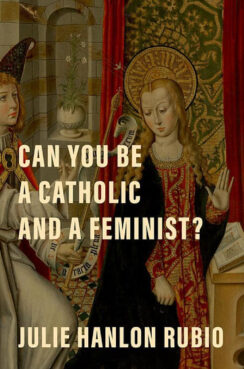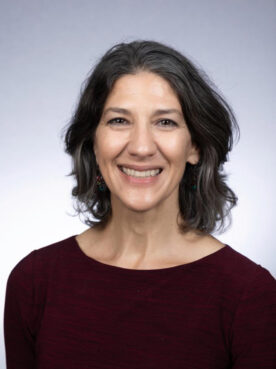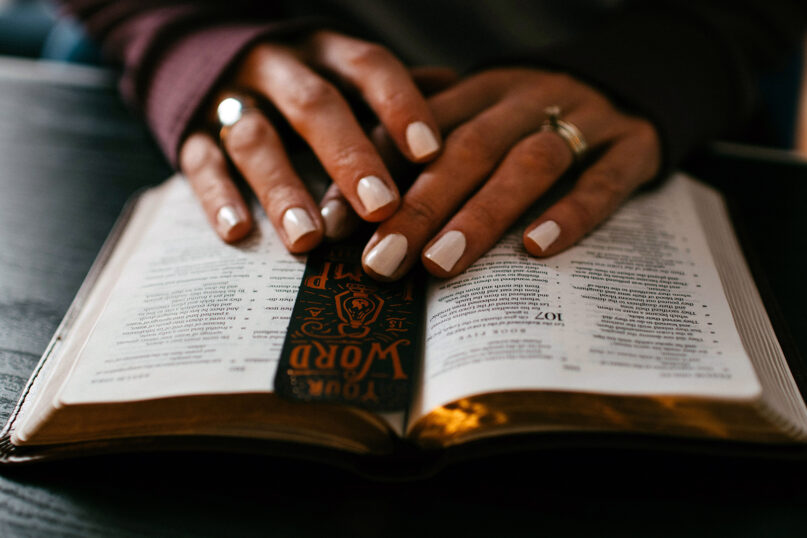VATICAN CITY (RNS) — Women are leaving the Catholic Church at an alarming rate, many citing “irreconcilable differences.” In a world waking up to the reality of sexism and sex abuse at every level of seemingly every institution, the church’s slowness to adapt and engage with feminist demands has weakened its hold, with some women leaving the faith altogether.
In her latest book, “Can You Be a Catholic and a Feminist?”, theologian Julie Hanlon Rubio argues that while many Catholic feminists in the 1970s had outlined a way for their two identities to coexist, it is much harder today.
“Beginning in 2017, the #MeToo and #ChurchToo movements came together to raise profound questions. Not for the first time, Catholic women confronted the sins of the priests, bishops, and the Vatican, as well as the flaws of the hierarchical structure that enabled abuse. Some stopped going to Mass or putting money in the collection basket,” Rubio writes in her book.
“Suddenly the possibility of not being Catholic seemed all the more real. Previously satisfactory answers to the question, ‘Why stay?’ no longer felt sufficient in the face of such egregious failures,” she wrote.

“Can You Be a Catholic and a Feminist?” by Julie Hanlon Rubio. (Courtesy image)
Each one of the nine chapters of the book addresses a topic: human dignity, sex, work, marriage, life, gender, power, prayer and belonging. Each topic is analyzed from both a Catholic and a feminist perspective, seeking points of tension as well as opportunities for synergy.
When it comes to understanding our common humanity, the dignity of each individual in terms of their sexuality and the importance of striking a balance between personal flourishing through work and a commitment to family, Catholics and feminists can find common ground, according to the theologian.
But questions concerning abortion and the lack of female leadership in the church remain the most problematic for feminists wishing to stay in the institution, the book argues. Surprisingly, the chapter on prayer highlights the greatest point of tension between feminism and Catholicism.
“I sit in church, and we know that there is so much knowledge in the room, and women are silent unless they are reading the words of men. Women never have the opportunity to lead the congregation in prayer, and that should really trouble us,” Rubio told RNS in an online interview on Tuesday (March 19).
“Even though it’s not necessarily the tension that people feel, there is something wrong with that,” she added.
Rubio acknowledges the work Pope Francis has done to promote the visibility and influence of women in the church. Not only has he spoken strongly to condemn violence against women, but he has also appointed a large number of women to lead Vatican departments. He called for a Synod on the theme of Synodality, born from a massive consultation of Catholic faithful at every level and in every country, which resulted in a summit where women were allowed to not only participate but also vote for the first time.

Julie Hanlon Rubio. (Photo courtesy Santa Clara University)
Even so, the author lamented the small number of women theologians asked to participate actively in the synod. “At the end the bishops are going to enter the room and make the decisions,” she said. The Vatican recently announced that the second synod gathering, scheduled for October, will focus on how to make the church more synodal, pushing controversial issues, including the question of women’s leadership, to the summer of 2025.
The Catholic Church has not always been on the right side of history concerning the role of women, initially opposing the suffrage of women and the push for women to work outside of the home, Rubio observed in the book. Many steps have been made to promote women in the church since then, but there is still much work ahead.
While feminism has moved to address today’s discourse on gender, sexism, racism and diversity, the church “moved more slowly and stands at odds with the social conversation,” Rubio said. In many Western countries, women are less likely to compromise on abortion, which the church strongly condemns.
Women are finding unconventional spaces to wield influence, Rubio said. “Change is happening in parishes,” she said, which “are finding different ways of giving women power to lead.” As the Vatican buys time by creating study groups to find alternatives to clericalizing women, young Catholic women explore new and unregulated pulpits, such as Instagram and TikTok.
“They might not call it preaching, but I would,” Rubio said. “It doesn’t violate any rules, but it’s a different way in the church. If you have 100,000 followers, you can’t say you don’t have power or influence in the church.”
Women today see a society where they can thrive, she said, which makes the lack of female leadership in the church even more striking and makes walking away more of a possibility. Being a Catholic and a feminist is possible, according to Rubio.
“When you put Catholicism and feminism together, you get something that is really rich,” Rubio said, especially when it comes to combining their robust beliefs on inherent human dignity. “When you put these things together, that for me is worth staying for,” she added.
Rubio’s book “Can You Be a Catholic and a Feminist?” will be published by Oxford University Press on March 29.





